European cars
Audi News
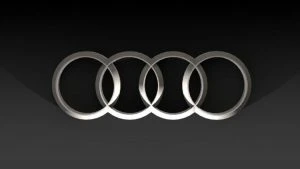
Audi has been pumping out some magnificent cars in the last few years, most of them being excellent petrol and diesel cars. What direction are they taking in the blending of hybrid technology and EV-only? The straight answer is that Audi is on the ball and have been introducing an exciting range of EV power into their brand nice and gradually, as they should.
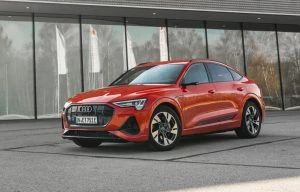
Audi e-tron S Sportback
The e-tron is, perhaps, the more widely identified model that Audi are making as fully electric cars. The e-tron is already nearing a new update, and the set of models we’re likely to see arrive sometime in 2022 are the Audi e-tron S and the Audi e-tron S Sportback. What is special about these two is that Audi e-tron S models carry two electric motors on the rear axle and one on the front and can generate a nearly instantaneous 370 kW of power and 973 Nm of torque in full boost mode for 8 seconds at a time. Because the 2 rear motors have been designed independently of one another, they can operate with the utmost precision and can help the driver power out of corners with the confidence of Audi’s special torque vectoring systems. In normal driving conditions, the front motor remains off until it is needed. When needed for ultimate performance and traction, the front electric motor flicks on and into action.
The new Audi e-tron S models boast wider bodywork than the standard models. They will be equipped with Digital Matrix LED headlights, where each light is divided into 1.3 million pixels and can be controlled with precision, opening up many new functions. As road traffic regulations allow, these digitized lights could include on-road lane markers and lightbeam functions that can dip around or below other cars. The matrix-design LED headlights come as standard, however.
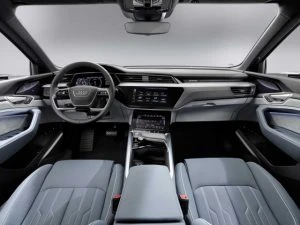
Audi e-tron S
Both of the Audi e-tron S models come standard with a 12.3-inch virtual cockpit, 3D satellite navigation imagery, predictive traffic light information, in-vehicle LTE-powered Wi-Fi for up to eight connected devices, a top-view camera, traffic sign recognition, Audi active lane assist with turn assist, Audi pre sense front, adaptive cruise assist and Audi phonebox with signal boosting capability.
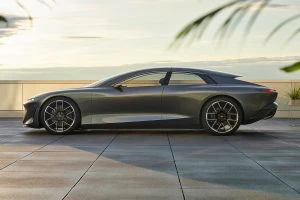
Audi Grandsphere Concept
Also hugely exciting for Audi fans is the Audi Grandsphere concept, a luxury sedan with an electric drive system. Magnificent comfort, which Audi liken to a first-class flight, will be the experience Audi is aiming for with Grandsphere. At 5.35 metres long, the Grandsphere sedan combines the luxury of private travel in ultimate comfort with a comprehensive onboard experience with Level 4 automated driving where the interior turns into a spacious sphere of experience without a steering wheel, pedals, or displays. Instead, the front of the cabin is a first-class lounging area with maximum space, more open views, and access to all the functions of a holistic digital ecosystem that the Audi Grandsphere will provide. This is a very ambitious car; however, with the rate of hybrid and EV technology becoming more and more readily available, and as we already live in an age where digitized everything is at your fingertips or voice control, the Grandsphere concept might not be too far from becoming a reality. I only hope that the fun and satisfaction of human ability and the experience of the real world will not be stifled by technology and virtuality.
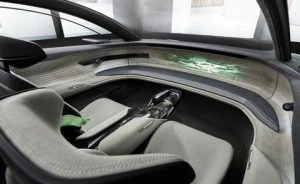
Audi Grandsphere Interior Concept
Alfa Romeo and Stellantis
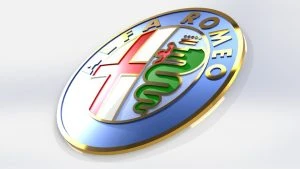
There is change in the air for Alfa Romeo. At the beginning of 2021, a multinational automotive manufacturing corporation called Stellantis was formed on the basis of a 50-50 cross-border merger between the Italian/American conglomerate Fiat Chrysler Automobiles and the French PSA Group. The headquarters of Stellantis is in Amsterdam, Netherlands. Alfa Romeo will be among the first of the 14 brands of Stellantis vehicles that will take a full-electric approach to its new cars. Mentioned at a meeting recently, the new Stellantis group will see Alfa Romeo become a fully electric brand that will compete globally as early as 2027 – its key markets being that of China, Europe and the US.
It is possible that the first all-electric Alfa Romeo could be an electric subcompact crossover that will arrive 2023/24 and combine with similar models from Fiat and Jeep. Stellantis has announced plans to introduce four electric platforms that will eventually cover most vehicles across the company’s 14 brands, and the models should have a power range of 300 – 500 miles (480 – 800 km). Alfa Romeo will use a platform known as the STLA Large, which will also be used by Maserati. There will also be platforms known as STLA Small and STLA Medium. Stellantis says that Alfa Romeo will pursue two battery chemistries for its vehicles. Right-hand drive development was also to be assured, so all future EV Alfa Romeo models could easily be driven in Australia.
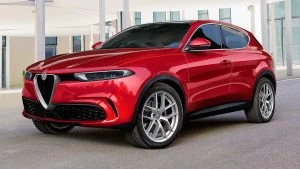
Alfa Romeo Tonale
Next year we should see Alfa Romeo offering its first plug-in hybrid, which will be exciting. I’m a big fan of hybrid technology. The model will most likely be a compact crossover based on the recent Tonale concept.
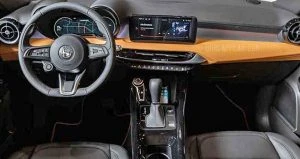
Alfa Romeo Tonale
Until the arrival of the Alfa Romeo Tonale, Alfa Romeo Australia will still enjoy the fantastic-to-drive Alfa Romeo Giulia sedan and Alfa Romeo Stelvio mid-size SUV. For 2021, the Stelvio SUV and Giulia sedan boast some more new technology inside the cars, which includes Level Two advanced driver assistance systems such as traffic sign recognition, intelligent speed control, active blind-spot assist and driver attention assist.
Currently, the entry level Stelvio puts out 148 kW of power and 330 Nm of torque from the 2.0-litre turbocharged petrol engine. You should be able to buy a new one of these for around the $65k mark.
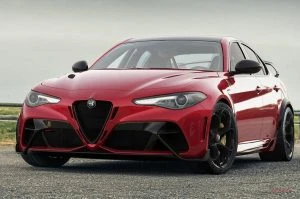
Alfa Romeo Giulia
Fiat Happenings

Scattered around Australia are numerous Fiat outlets with showroom teams that are willing to buy, sell and service any of their special brand of car. You’ll find a Fiat showroom in Perth, Adelaide, Melbourne, Canberra, Sydney, Wollongong, Brisbane and on the Sunshine Coast. There are even more places around Australia who are experts in servicing or accessing parts for your Fiat or Fiat Abarth vehicles. This leaves you very little need to hold off being the proud owner of a new or used Italian legend should you so desire.
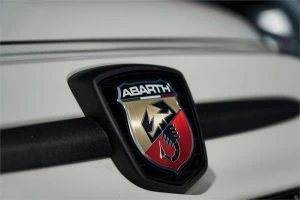
New 2021/2022 Fiat vehicles offer a variety of small 4- and 5-seater cars that come as standard little hatchbacks or hatchbacks with a bit more Abarth pep and performance. The Abarth brand are the performance models that are special Fiat 500s with lots of fun and plenty of zip to make your drive both entertaining and unique. The standard Fiat 500 is a surprisingly roomy small car that is comfortable and efficient to drive.
Fiat also does a range of commercial vehicles that are mainly a variety of medium and large vans. These are popular vans for businesses because Fiat offer their range of modern, safe vans at a reasonable price, and the team are willing to back their vans up with a competitive servicing and warranty package for any of their new Fiat-commercial-model buyers. Fiat also offer the Ducato in a range of motorhome and camper styles.
Fiat really is a quintessential “Made in Italy” stamp with all its Italian history, style, constant innovation and decent quality being part of the modern range. The recent Fiat 500 has seen 80% of its sales outside of Italy, and it is a model that leads the city car segment in Europe together with its cute little sibling, the Fiat Panda.
Recently, the introduction of the Hybrid Fiat 500 and Panda has given an extra boost to the sales of both models. These are exceptionally economical cars. In Italy, the stylish Fiat 500X has been refreshed, ready to continue playing a leading role in many Italian family’s lives. Indeed, since its launch in 2014, the Fiat 500X has always led its segment in Italy, and the car regularly features in the European top 10 small-car segment.
Recent news from Fiat in Europe has seen some other new model launches, which would also be nice to see become available here in Australia – particularly for those of us who want to get the benefits of driving a small and efficient car with Italian style. The final months of last year saw the new Fiat 500, Tipo, Tipo Cross and Panda range, and so Fiat has brought 2021 around with the entire line-up of cars being completely refreshed.
A lot of effort has gone into providing new Fiats and Abarths with all the latest technology, safety, comfort and style for each new variant. New models also boast Euro 6D-Final-compliant engines across the entire range. The Connect trim level is directed at customers who want to stay connected at all times. Models with Connect come standard with the 7-inch Uconnect infotainment system with DAB radio, Apple CarPlay and Android Auto, the easy and efficient way to exploit the services of your device while travelling in your car.
Standard features of the 2021 Fiat 500 also includes cruise control, a sports steering wheel with built-in controls, 15-inch alloy wheels and fog lights. You can also select the dedicated new Perbene Grey/Vesuvius Black two-tone insignia. The 2021/2022 Fiat 500X comes with black seats, a techno-leather steering wheel, 16-inch alloy wheels, blacked-out windows, fog lights, LED DRLs, parking sensors, along with dusk sensors and rain sensors.
Here is a picture of the stunning little Abarth F595. Check out the gorgeous body kit and quad exhausts!
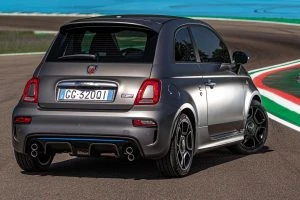
Abarth F595
History Made: Mercedes-Benz EQS
Mercedes-Benz has long been seen as the leader in trickle-down technology being seen in cars some years after featuring in the brand’s higher end saloons such as the S-Class. And with the release of their first all electric luxury vehicle, the EQS, this tradition is set to continue.
The EQS will offer ranges of up to 770 kilometres and will pack a powertrain of up to 385kW. A performance version is said to be in development and with up to 560kW. It will sit within the expectations of the S-Class saloon segment. The vehicles will be rear axle driven however the models fitted with the 4MATIC will have a front axle engine also.
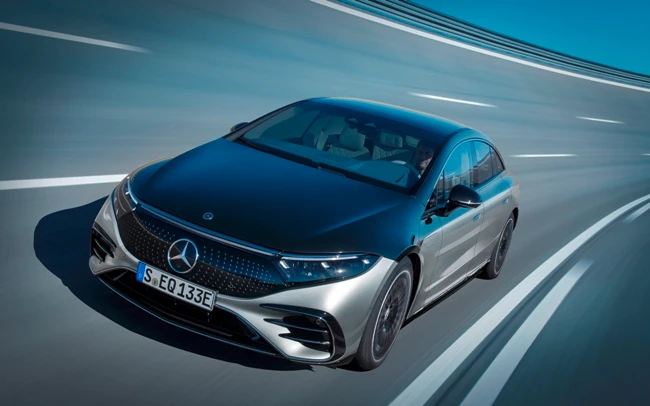
Mercedes-EQ, EQS, V 297, 2021
Mercedes says the initial models will be the EQS 450+ with 245 kW and the EQS 580 4MATIC with 385 kW. The rated power consumption rates are quoted as 20.4-15.7 kWh/100 km, and 21.8-17.4 kWh/100 km. New technology for the batteries has them enabled with a higher energy density. Of the two batteries to be available, the larger will have a usable energy content of 107.8 kWh. Mercedes says this is around 26 percent more than the EQC, their EV SUV.
It’s tech that is bespoke for M-B, with the software having been fully developed by the company and allowing over the air updates. This keeps the management system up to date, and for the life cycle of the battery. In respect to the charging rates, the DC fast charge stations pump in 200kW( and 300km in around 15 minutes. On a home charger system the EQS charges up to 22kW with AC power. The software will also allow intelligent charging programs and battery-saving charging.
A key component of EV technology is is energy recuperation. The EQS uses a program called DAuto, which can recuperate energy from deceleration to zero without the need for the brake pedal to be utilised. Smart cruise tech employs the same mechanisms with vehicle traffic ahead of the EQS. Intelligent energy recovery is situation-optimised with the aid of ECO Assist and acts with foresight, taking into account traffic conditions or topography, among other things, and up to 290kW can be generated. The driver also can set three energy recovery levels and the coast function via paddle shifters on the steering wheel.
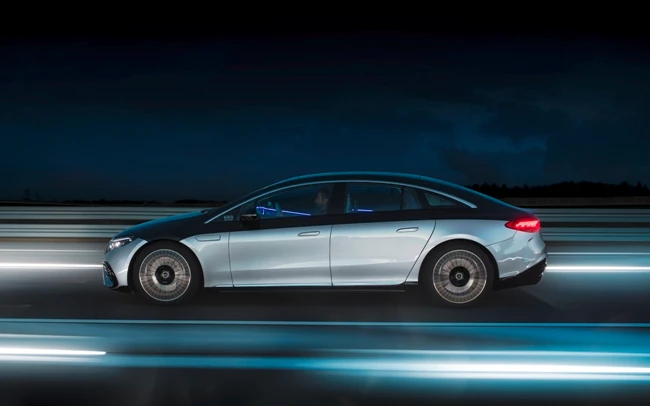
Mercedes-EQ, EQS, V 297, 2021
Also available as OTA or over the air will be the activation of vehicle functionalities. This includes two driving programs for younger aged drivers and for service staff. Light entertainment in the installation of games will also be available. Plus the updates will allow personal preference settings such as changing the steering angles for the rear wheel steering from the standard 4.5 degrees to the maximum 10 degrees. Planned is the activation of subscription services and testing on future programs.
Aerodynamics plays a big part in vehicle fuel efficiency and the new EQS has plenty of aero in the design. in fact, it’s currently rated as the most aerodynamic car available with a drag coefficient of 0.20cD. In conjunction with that slippery body is the reduction of wind noise at speed, improving comfort levels.
The need for aero is due to the EQS being on a new chassis architecture to provide a home for the powertrain. Mercedes-Benz calls the design language Sensual Purity, with smooth, organic, lines, a reduction in the join lines in panels, the fastback styling. The front end is a “Black Panel” look with the headlights running seamlessly into the grille panel which can be optioned with a 3D star pattern to complement the three-pointed Mercedes star.
Embedded throughout the EQS is a network of sensors, up to 350 of them, depending on specification. Amongst the types of information recorded are distance travelled, ambient lighting conditions, acceleration rates and speeds achieved. AI then utilises these datasets to adjust the car on the fly. This includes monitoring the battery charge levels in respect to the distance required to see the next charging point thanks to the onboard Navigation with Electric Intelligence.
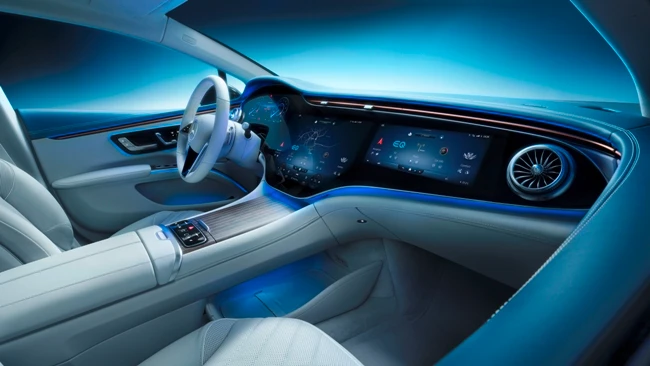
Mercedes-EQ, EQS 580 4MATIC, Interieur, Nevagrau/ Iridescentblau, AMG-Line, Edition 1; MBUX Hyperscreen; ( Stromverbrauch kombiniert: 20,0-16,9 kWh/100 km; CO2-Emissionen kombiniert: 0 g/km) // Mercedes-EQ, EQS 580 4MATIC, Interior, neva gray/ iridescent blue, AMG-Line, Edition 1; MBUX Hyperscreen ; (combined electrical consumption: 20.0-16.9 kWh/100 km; combined CO2 emissions: 0 g/km)
Being a class-setting EV, the EQS packs in some high-end green technology for the passengers. An example is the HEPA filter than can be set to fully clean the air inside the cabin before passengers enter with the onboard data system, MBUX, able to display particulate levels inside and out. Recycled materials are used in areas such as the carpets. The manufacturing process is fully carbon-offset as well.
The MBUX Hyperscreen is the absolute highlight in the interior. This large, curved screen unit sweeps almost from A-pillar to A-pillar. Three screens sit under a cover glass and appear to merge into one. The 12.3-inch OLED display for the front passenger gives him or her their own display and control area. The entertainment functions are only available there while the car is being driven in accordance with the country-specific legal regulations. Mercedes-EQ relies on an intelligent, camera-based locking logic: if the camera detects that the driver is looking at the front passenger display, it is automatically dimmed.
As part of its Ambition 2039 initiative, Mercedes-Benz is working on offering a carbon-neutral new car fleet within 20 years from now. By as early as 2030, the company wants more than half the cars it sells to feature electric drive systems – this includes fully electric vehicles and plug-in hybrids. In many areas, Mercedes is already thinking about tomorrow today: the new EQS is designed to be correspondingly sustainable. The vehicles are produced in a carbon-neutral manner, and resource-saving materials such as carpets made from recycled yarn are used. This is because Mercedes-Benz considers the entire value chain, from development and the supplier network to its own production. Mercedes-Benz AG has had its climate protection targets confirmed by the Science Based Targets Initiative (SBTI).
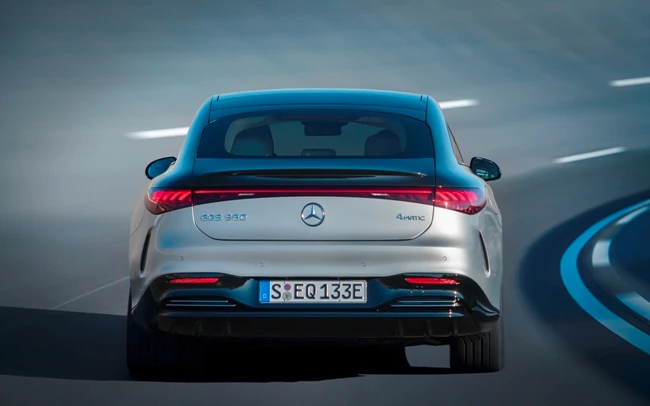
Mercedes-EQ, EQS, V 297, 2021